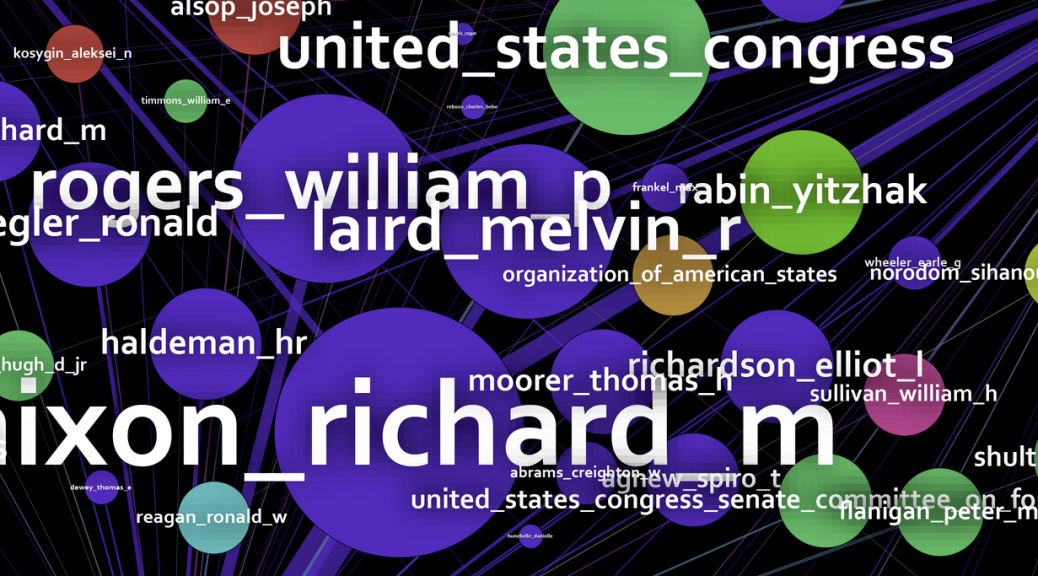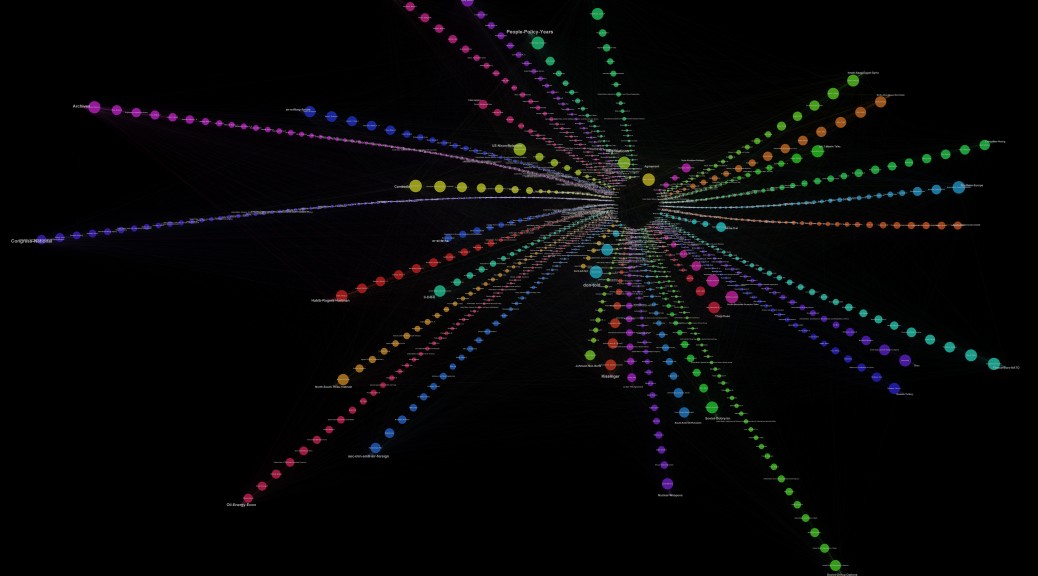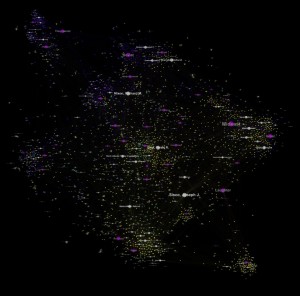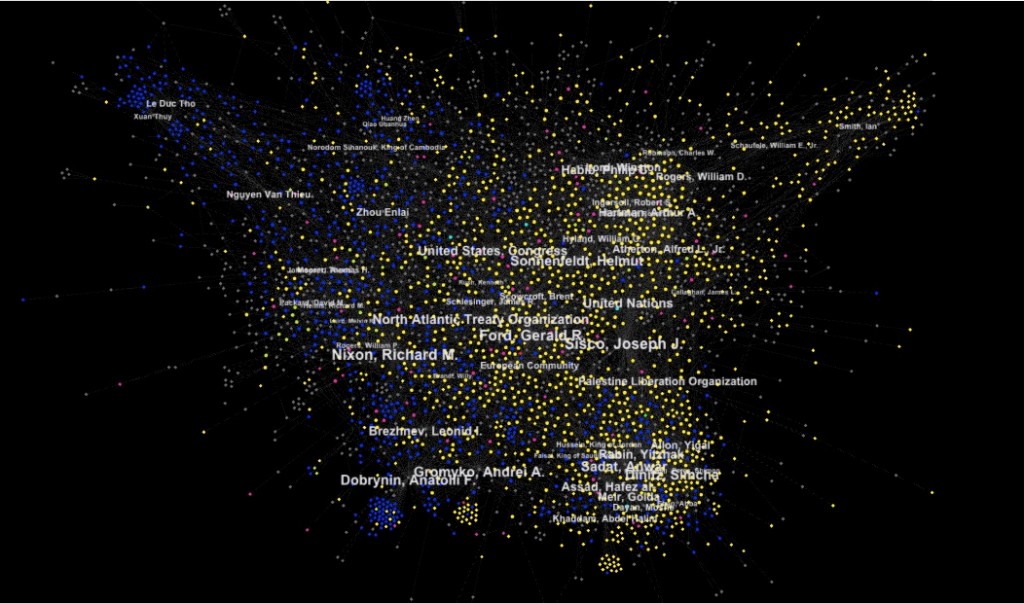This diagram, a filtered subset of a complete dataset, shows only those participants who are associated with archival documents assigned to just 3 of the hundreds of DNSA subject tags – those related to violent action in Cambodia. Examining the differences and similarities in the kinds of individuals that are associated with a tag using emotionally powerful language like ‘Bombing of Cambodia’ versus those associated with tags using more formal language (eg ‘Military Action in Cambodia’ or ‘Invasion of Cambodia, 1970’) raises some interesting questions.
Besides the center cluster of those associated with all three tags, the largest population of participants in the graphic below are those associated with the tag ‘bombing of Cambodia.’ The largest shared population between two nodes is the cluster in the lower right between ‘Bombing of Cambodia’ and ‘Invasion of Cambodia, 1970’. The other tag, ‘Military Action in Cambodia’, has a population noticeably further away than the other two, and small populations of participants shared with either of the other two tags. There are other tags to choose from but the pattern seems to suggest a close overlap between the ‘Bombing’ and ‘Invasion’ tags’ participants.
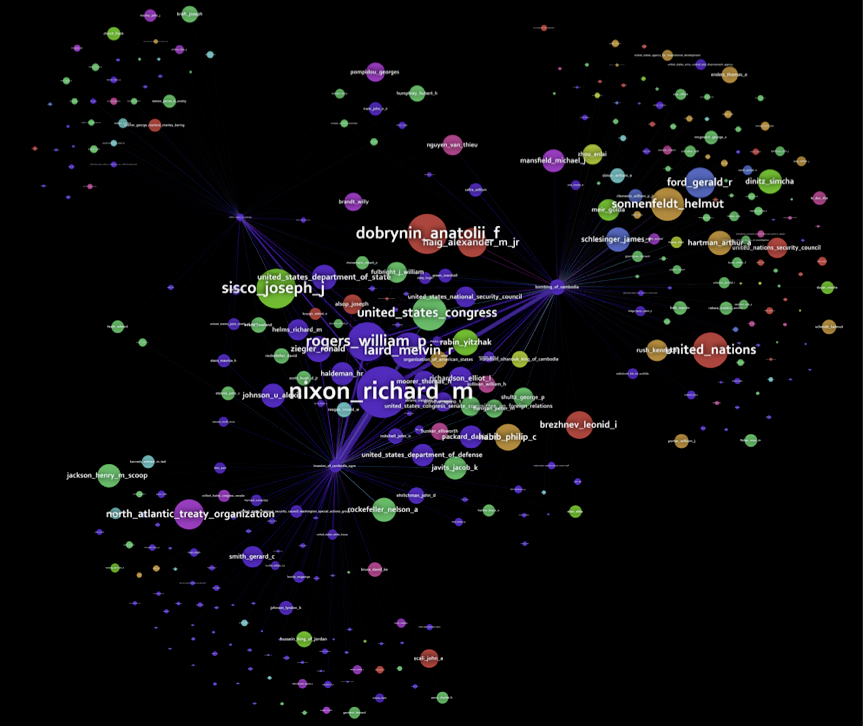 (click on the image for a high-resolution version, which may take a few moments to load)
(click on the image for a high-resolution version, which may take a few moments to load)
